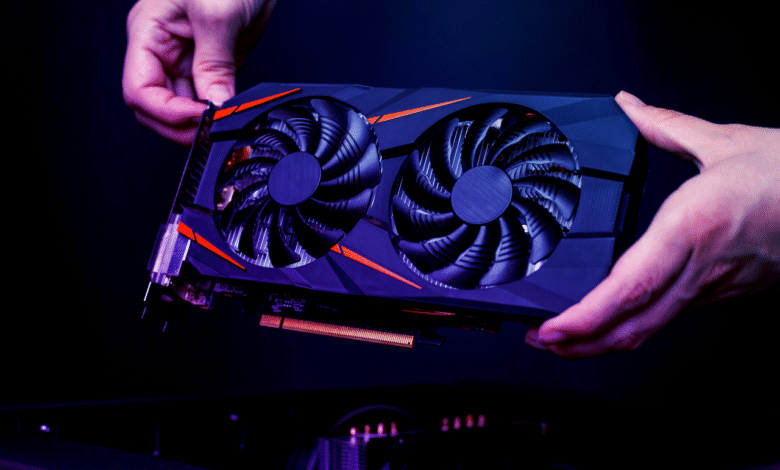
In the fast-paced world of technology, the optimization of your computer’s graphics card is more critical than ever. Whether you’re a passionate gamer, a creative professional working with graphic-intensive applications, or simply someone who values a smooth computing experience, understanding and optimizing your graphics card can significantly enhance overall system performance.
Read More: How to Build a Gaming PC: A Step-by-Step Guide
Understanding Computer Graphics Card
Before embarking on the optimization journey, it’s essential to comprehend the nuances of your graphics card. Graphics cards come in various types, each designed for specific purposes. Understanding specifications such as VRAM (Video Random Access Memory), clock speed, and CUDA cores can help you make informed decisions. Take the time to identify your current graphics card state, ensuring you have a baseline for the optimization process.
Common Graphics Card Issues
Graphics cards, like any other hardware component, can face issues that impact performance. Overheating is a common problem, often leading to performance throttling and system instability. Driver-related issues and outdated firmware can also hinder your graphics card’s ability to function optimally. Recognizing and addressing these issues is crucial before diving into the optimization process.
Steps to Optimize Your Graphics Card
Optimizing your graphics card involves a series of strategic steps. Start by keeping your graphics card drivers up to date. Regular driver updates often include performance improvements and bug fixes, ensuring your graphics card operates at its best. Additionally, adjusting graphics settings within your system can tailor the performance to your specific needs, whether you’re focused on gaming, content creation, or other graphic-intensive tasks.
Tools for Optimization
Numerous tools are available to simplify the optimization process. We’ll explore popular software options, discussing the advantages and disadvantages of each. From user-friendly interfaces to advanced features, understanding these tools’ capabilities is essential for effective optimization. This section will guide you on how to leverage these tools to enhance your graphics card’s performance.
Advanced Optimization Techniques
For enthusiasts seeking to push their graphics card beyond factory settings, advanced techniques such as overclocking come into play. However, it’s crucial to approach overclocking with caution, as it can lead to overheating and potential hardware damage if not done correctly. We’ll also explore customizing GPU settings and utilizing third-party utilities for more granular control over your graphics card’s performance.
Importance of Regular Maintenance
Optimization is not a one-time task but an ongoing process. Regular maintenance is key to ensuring your graphics card operates at its peak. We’ll discuss the importance of cleaning your graphics card to prevent dust buildup, ensuring proper ventilation, and incorporating regular system scans and updates into your routine.
Troubleshooting Common Optimization Challenges
Despite your best efforts, challenges may arise during the optimization process. This section will provide guidance on dealing with compatibility issues, addressing unexpected performance drops, and knowing when it’s time to seek professional help for more complex problems.
Case Studies
Real-life examples will be presented to illustrate successful optimization attempts and share insights gained from unsuccessful ones. These case studies provide a practical understanding of how optimization strategies can be adapted to various graphics card scenarios.
Future Trends in Graphics Card Optimization
Looking ahead, we’ll explore emerging technologies in graphics cards and anticipated improvements in optimization processes. Staying informed about future trends ensures that your optimization efforts remain relevant in the dynamic landscape of graphics card development.
Conclusion
Optimizing your computer graphics card is not just a technical task but an investment in your overall computing experience. By following the outlined steps, understanding your graphics card, and staying proactive in maintenance, you can unlock the full potential of your graphics card, ensuring a smoother and more enjoyable user experience.
Read More: How To Build A Custom PC: A Comprehensive Guide
FAQs
Q: What are the signs that my graphics card needs optimization? Common signs include reduced performance, overheating, and compatibility issues with newer applications. If you notice any of these symptoms, it’s a good indicator that optimization may be beneficial.
Q: Can I optimize my graphics card without using third-party tools? Yes, optimizing your graphics card is possible through manual methods such as updating drivers and adjusting system settings. However, third-party tools can streamline the process and offer additional features.
Q: Is overclocking safe for my graphics card? Overclocking can enhance performance but comes with risks such as overheating and potential hardware damage. It’s essential to follow best practices and monitor temperatures when overclocking.
Q: How often should I clean my graphics card? Cleaning your graphics card every 3-6 months is a general recommendation. However, the frequency may vary based on your computer’s environment and usage.
Q: What should I do if my optimization attempts fail? If issues persist after optimization attempts, consider seeking professional help. A technician can diagnose and address underlying problems that may be affecting your graphics card’s performance.







